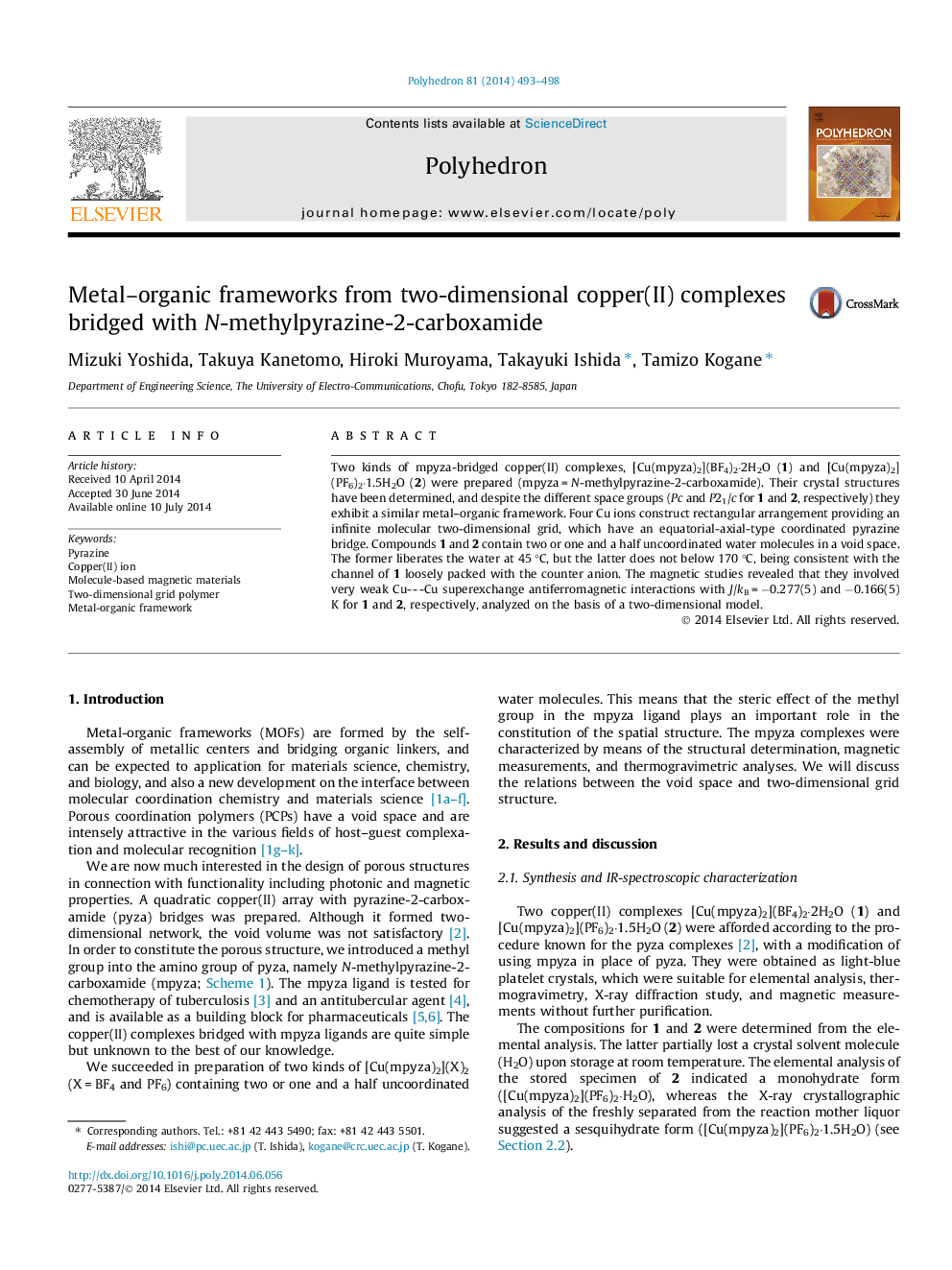| Article ID | Journal | Published Year | Pages | File Type |
|---|---|---|---|---|
| 1334457 | Polyhedron | 2014 | 6 Pages |
Two kinds of mpyza-bridged copper(II) complexes, [Cu(mpyza)2](BF4)2·2H2O (1) and [Cu(mpyza)2](PF6)2·1.5H2O (2) were prepared (mpyza = N-methylpyrazine-2-carboxamide). Their crystal structures have been determined, and despite the different space groups (Pc and P21/c for 1 and 2, respectively) they exhibit a similar metal–organic framework. Four Cu ions construct rectangular arrangement providing an infinite molecular two-dimensional grid, which have an equatorial-axial-type coordinated pyrazine bridge. Compounds 1 and 2 contain two or one and a half uncoordinated water molecules in a void space. The former liberates the water at 45 °C, but the latter does not below 170 °C, being consistent with the channel of 1 loosely packed with the counter anion. The magnetic studies revealed that they involved very weak Cu- - -Cu superexchange antiferromagnetic interactions with J/kB = −0.277(5) and −0.166(5) K for 1 and 2, respectively, analyzed on the basis of a two-dimensional model.
Graphical abstractTwo kinds of mpyza-bridged copper(II) complexes, [Cu(mpyza)2](BF4)2·2H2O (1) and [Cu(mpyza)2](PF6)2·1.5H2O (2) were prepared (mpyza = N-methylpyrazine-2-carboxamide). Their crystal structures have been determined, and, despite the different space groups (Pc and P21/c for 1 and 2, respectively), they exhibit a similar metal–organic framework. Four Cu ions construct rectangular arrangement providing an infinite molecular two-dimensional grid, which have an equatorial-axial-type coordinated pyrazine bridge. Compounds 1 and 2 contain two or one and a half uncoordinated water molecules in a void space.Figure optionsDownload full-size imageDownload as PowerPoint slide
